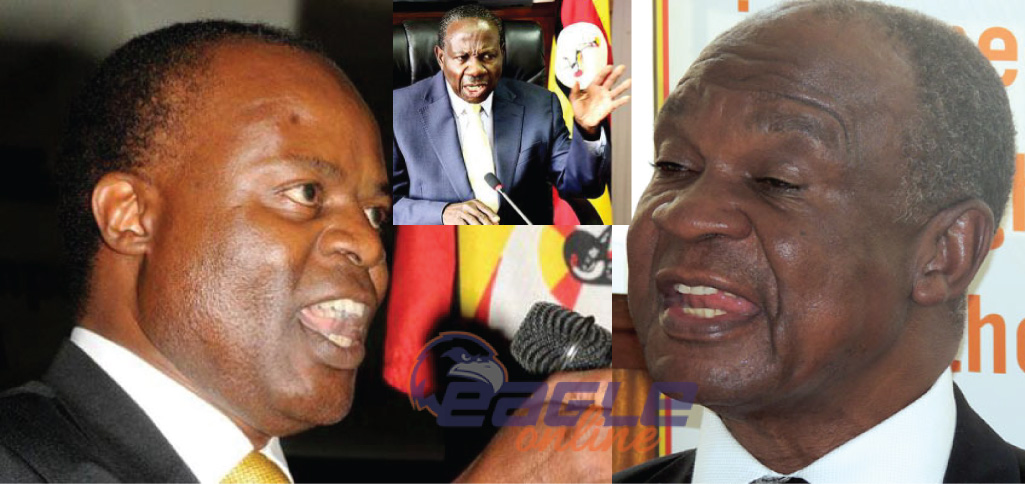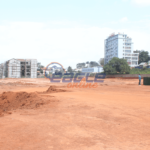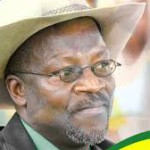The Uganda Bureau of Statistics (Ubos) released its quarterly GDP estimates for the final quarter of 2017, showing that real GDP grew at 6.9 percent in 2017 compared to the same period in 2016.
The Ubos analysis shows that growth was widespread across agriculture, industry and services recording buoyant growth in second quarter of 2017.
The growth above was confirmed by the minister of Finance Planning and Economic Development Matia Kasaija and the Deputy Governor -Bank of Uganda, Dr Louis Kasekende, who said Uganda has had a rise in exports and hence brought in more foreign exchange as exports grew by 14.3 per cent.
But the Chairman of the National Planning Authority (NPA), Dr Wilberforce Kisamba Mugerwa, disagrees with Minister Kasaija and Kasekende. He says the economy is declining instead and that because of this; the country will not achieve the middle income status by 2020.
Mugerwa says the economy has grown at a low pace for the last three years of the implementation of the second National Development Plan (NDPII). He says government needs to change they way it has been handling its business to put the economy back on track.
Analyst warns of bad economy as well
Meanwhile Minister Matia Kasaija has prepared the National Budget Framework Paper of Financial Year 2018/19 – FY 2022-23. But an analyst says the minister must be careful when he talks about the recovery of the economy. He says government should answer for the consequences its economic policies have affected the financial stability and fiscal responsibility.
The analyst says that part of the new national budget framework high lights issues that reflect that the economy is not recovering due challenges such as:
Low revenue to GDP ratio, poor planning and budgeting due to non-adherence to Sector Investment Plans and increasing trends in supplementary pressures, Lack of inter and intra sectoral coordination and increased cost of public administration resulting from creation of authorities, universities, districts and related administrative units.
The other is the accumulation of domestic arrears, arising majorly from court awards and delayed payment to the private sector that supply government and low budget absorption especially for infrastructure projects resulting from delayed acquisition of right of way for projects and lengthy procurement processes.
“If this isn’t signs of trouble ahead and lack of control of the economy, nothing is. When the government has trouble paying their dues, when they cannot absorb needed budgeted funds and also create longer procurement processes, while there is poor planning and lack of cooperation between different parts of the government and institutions. Therefore, the basic cost of developing projects and day-to-day services will be more costly, while the misuse of funds will grow. That is not the good steady progress, the ruling government promised in recent elections or anytime else for that matter in the reign of Museveni,” he says.
Debt escalation
He continues that: As the scale of debt has been on the rise of different years. The paper is clearly signaling bad news as well: “Amortization of external debt is projected at US $ 236.5 million, equivalent to Shs894 billion in FY2018/19, which is relatively high compared to past levels because of repayment of the PTA loan. Thereafter, external debt amortization is projected to reduce to US$ 131.8 million in FY 2019/20.
Government’s interest payments are projected at Shs2, 701 billion in FY2018/19, of which Shs2, 279 billion is interest on domestic securities and the rest is interest on external debt. Interest payments constitute 9.8 per cent of total resources available for spending next financial year. The figure is projected to rise to Shs 2,788 billion in FY 2020/21 and will amount to Shs3084 billion during FY2021/22. A great percentage of interest payments about 84 percent is domestic interest payments which partly reflects high cost of domestic borrowing. This, he says cannot be a signal of the economy on recovery.
“Total government expenditure and net lending (excluding debt refinancing) will amount to Shs22, 520 billion in FY2018/19 and further increase to Shs25, 059 billion in FY2019/20. The bulk of this expenditure (10.5 per cent) is largely on account of increase in development spending arising from the scale up of public investments by government.
However, moving forward the implementation of the infrastructure projects will be more gradual to ensure consistency with the requirements to meet the EAMU convergence criteria. Recurrent expenditure is projected to increase by Shs166 billion during FY 2018/19 mainly driven by an increase in domestic interest payments.”
That this combined with the early signs of worrying of procurement process, bad collective effort of ministries and also growing debt. None of this is a well-made government to secure services and institutions to serve the public.
Charles Mbiire
Recently at the Uganda Securities Exchange (USE) Dinner, the board chairman, Charles Mbiire, said the local market conditions still pose challenges. He was talking about the bad economy. “The local market conditions remain challenging; this means that as an Exchange, we need to carefully review our value addition to all stakeholders; investors, issuers, custodians, brokers and all market intermediaries,” he said.








